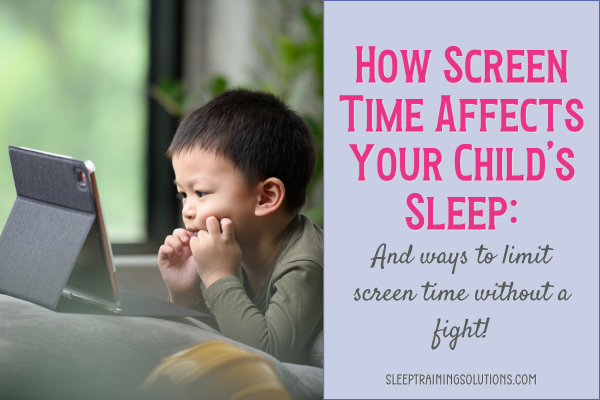How to juggle bedtime solo with multiple kids
How to do bedtime with more than one child by yourself
In an ideal world, each child would be paired with a parent to do bedtime together so it’s fun and relaxing. But almost half of the families I work with have spouses who travel extensively for work, have jobs where they get home very late, or are deployed, so I know that having help for bedtime is a luxury for many families! So here are some tips to help you get all the kids in bed at the right time without feeling like you’re juggling 18 balls and about to drop one at any time!
Give yourself grace and have realistic expectations
The very first thing to do is give yourself some grace, knowing that you’re going to do the best you can, but it will (almost) always be easier when your spouse is home. It is what it is and you’ll do your best to get the kiddos in bed, lights out within ~15-30 minutes of their ideal bedtime. Some nights will be easier than others and that’s ok.
Keep it simple for dinner
Let’s face it, if dinnertime becomes a madhouse experience, you KNOW the bedtime routine is just going to follow suit. One of the reasons this happens is because it’s 4:30pm, the kids are starting to get hangry and you have no idea what’s for dinner!
So start with simple meals that can be prepped ahead of time or easily prepared where you (hopefully!) won’t get stressed getting it on the table.
Some ideas:
Meal plan each weekend for the following week (or if you’re really ambitious - for the month!). Just print out a blank calendar (ie search online for “July 2023 blank calendar printable”) and pencil in the nights you plan to cook at home and what you’ll make (include a veggie and side so you can make sure you’re not serving broccoli or rice 8 days in a row!)
Freezer meals are an awesome time saver - you can make enough meals for a week or two in just a couple of hours and then thaw one overnight and pop it in the crockpot or Instapot the next morning. Zero dinnertime prep. (Pro tip: Once you find a few family favorites, take an afternoon and make 4-5 of the 4-5 different favorite meals. Get a discounted lifetime membership to try out hundreds of meal options here.)
Or choose meals by day of the week (ie Taco Tuesdays, Spaghetti Wednesdays, Breakfast for Dinner Thursdays, Pizza Fridays, etc).
If you’re eating together, get your older child(ren) to help clear the table and put the dishes in the dishwasher at the end of the meal.
If it’s too early for you to eat with them, perhaps you can clean up the dinner prep dishes while you’re having a conversation with them during dinner. Anything you’ll want to clean after the kids are in bed that you can do now will give you more time to yourself later so you can relax!
Be proactive with the little steps
When you have a moment during the day, make sure there are clean PJs/sleep sack in the bedroom and lay them out for each child, put the two books you’ll read on the rocking chair, make sure the bath towels are within reach in the bathroom, etc. Anything you can do ahead of time for the bedtime routine to go more smoothly is time well spent!
Use a timer
When you’re handling bedtime solo, using a timer can almost feel like you have a helper. I LOVE this timer because it’s “shows” time instead of just randomly beeping with no warning.
Some ways to utilize a timer to make sure the bedtime routine stays on track:
Set the timer for 5 minutes and when it goes off, it’s time to clean up toys before bed.
Use it during bathtime to make sure tub time doesn’t take up alll the time in the bedtime routine…and helps kids who want to stay in get out more easily when you’re not the “bad guy” saying they need to stop playing and get out - blame it on the timer!
If you have playtime (not screen time!) during the bedtime routine, you can set a timer here to again keep the bedtime routine moving along.
Have a consistent bedtime routine
I always tell my families to shoot for a bedtime routine that’s 30 minutes (or less). The exception is when you are putting multiple kids to bed at the same time…sometimes smooshing in all the steps for multiple kids into 30 minutes would be IMPOSSIBLE! So if you’re in that situation, taking 45 minutes to get everyone situated is fine. But when you have help again, try to get it back to 30 minutes.
Using a bedtime routine chart for the 3 years and older kids will be very helpful to keep them on task and prevent those stalling techniques. Be sure to build in any requests (like last sip of water, last hug, etc) into the chart.
Have older children become helpers
If you have a baby and a 3 year old or a 2 and 5 year old, involve your older child as a helper! Not only will it be helpful to you, but young kids love “doing jobs” and getting praise for a job well done.
When you’re getting ready to change the baby, ask your preschooler to grab a new diaper for you or put the dirty clothes in the hamper. If you’re bathing the baby first, ask your older children to get a bath toy she thinks her sister would like to play with.
Find places where the routines for different aged children overlap
If you have a child whose bedtime is 7 and another that’s closer to 7:30pm, you can likely do bath time together or read stories to your older child while you’re feeding the baby.
Don’t try to make overlapping happen if it’s just not feasible and makes one child overtired. That will make it harder to fall asleep (and stay asleep)!
Have a gameplan when your children have completely different bedtimes
If you have one child with an early bedtime and one with a later bedtime, your gameplan will depend on ages.
One thing to do, if at all possible: don’t include screen time in the evening because the exposure to blue light delays the development of natural melatonin for up to 90 minutes. So sticking a child in front of the tv or ipad should be a last resort if you need a few minutes to get another child in bed. (Ideally, you’d turn the night mode - orange-y tint on the ipad).
Here are some sample scenarios:
Scenario #1 - Baby with early bedtime and toddler/preschooler with later bedtime
If you’re wanting to do bathtime together, bathe your toddler in the baby’s bath routine slot, get them both dressed in PJs, ask your older child to help pick out two books for his sibling and read together while you’re feeding the baby. Put the baby down and then have playtime and stories with your older child.Scenario #2 - Toddler/preschooler and older child
If your older child is more self-sufficient and can do a shower alone (or with supervision after your younger child is in bed), do the routine with the younger child and your older child can do the shower and then meet up at the end for storytime or you can start your older children’s routine after your younger one is in bed if you need to do shower supervision.Enjoy the peace and quiet
Whether doing bedtime solo was a one-time thing or your spouse travels Monday-Friday every week for work, it’s hard to wrangle kids at the end of the day all by yourself. Once the kids are all in bed, take a few minutes for yourself to just take a deep breathe and relax. You may need to tidy up, prepare for the following day or catch up on work…but I hope you’ll do something enjoyable for a little bit. Just don’t stay up so late bingeing Netflix that YOU don’t get enough sleep ;)
Strategies for doing bedtime with multiple kids on your own
Related Posts:
Sleep Training Solutions is a participant in the Amazon Services LLC Associates Program, an affiliate advertising program designed to provide a means for sites to earn advertising fees by advertising and linking to Amazon.com and affiliated websites.
This post is for informational purposes only and may not be the best fit for you, your child and/or your personal situation. It shall not be construed as medical advice. The information and education provided here is not intended or implied to supplement or replace professional medical treatment, advice, and/or diagnosis. Always check with your child’s physician or medical professional before trying or implementing any information read here.





